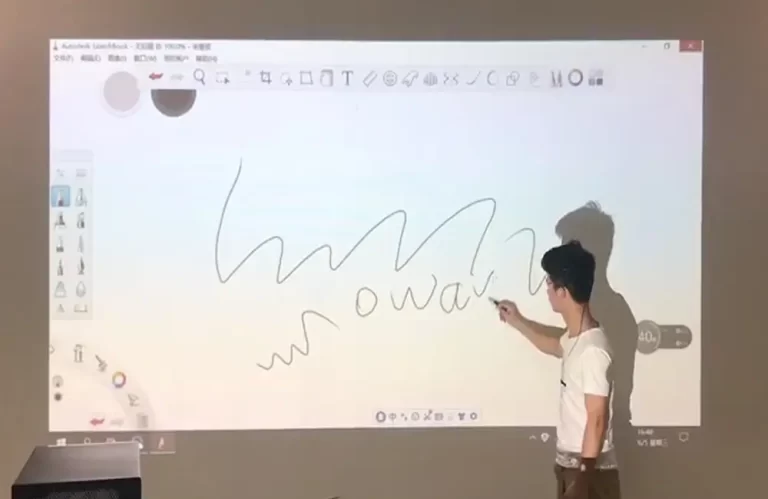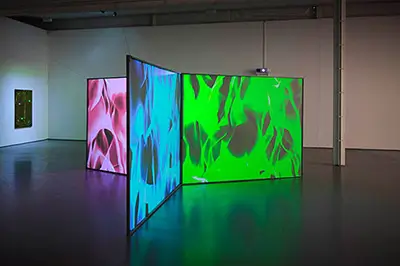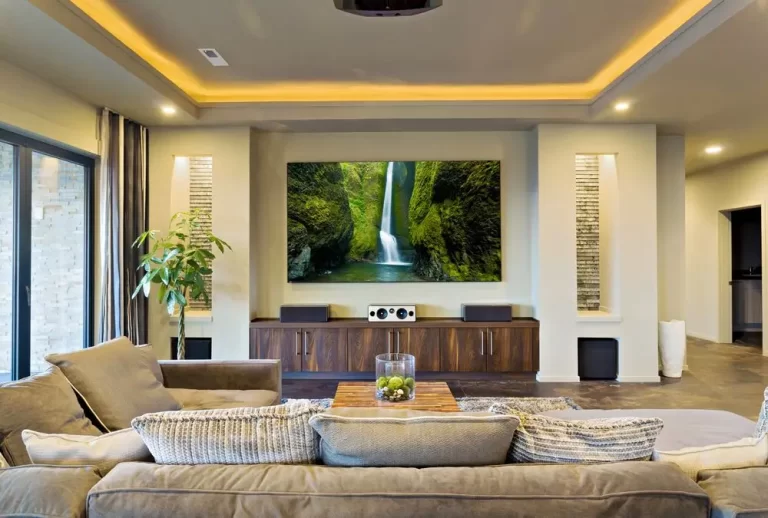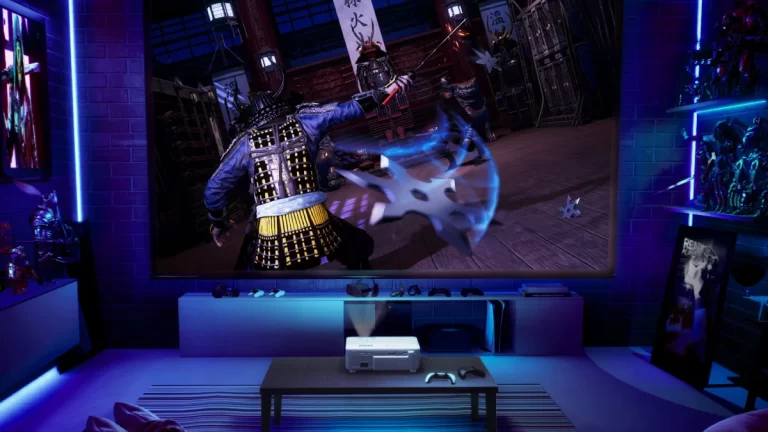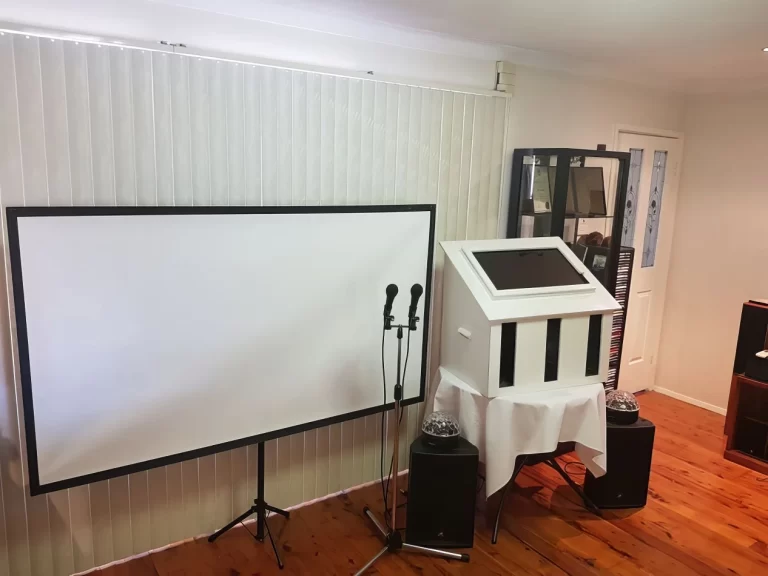Can You Use Projector Screen Without Projector? [12 Creative Methods]
-
 Written by:
Kristy Roger
Written by:
Kristy Roger
- Last Updated:
Have you ever wondered if you can use projector screen without projector?
I remember when I faced the same dilemma a while back, scratching my head, wondering if there was any way to make use of this beautiful screen without the projector.
But don’t fret! I will share some ways to make the most out of your projector screen, even without a projector.
Short Answer: Yes, you can!
Long Story: It can be used as a backdrop for presentations, a surface for art displays or even as a makeshift whiteboard for collaborative work.
Ready to dive in? Let’s get started!
![Can You Use Projector Screen Without Projector? [12 Creative Methods]](https://projectorgenius.com/wp-content/uploads/2023/11/Use-Projector-Screen-Without-Projector.webp)
I recommend using the Table of Contents to quickly access the information you need.
My article is designed to cater to home cinema users of all levels, from Beginners to Advanced enthusiasts.
Table of Contents
Can You Use Projector Screen Without Projector?
Yes, you can definitely use a projector screen without a projector. While it’s primarily designed to display images from a projector, a screen can also serve other purposes.
It can be used as a backdrop for presentations, a surface for art displays, or even as a makeshift “whiteboard” for collaborative work.
So, don’t limit your creativity—explore the versatile potential of your projector screen!
12 Creative Uses for a Projector Screen Without a Projector
Whiteboard or Presentation Surface
A projector screen can double as a whiteboard or presentation surface. The smooth surface is perfect for writing or drawing with dry-erase markers.
It’s an excellent choice for meetings, brainstorming sessions, or educational purposes.
Backdrop for Photography or Videography
Projector screens make great backdrops for photoshoots or video recordings.
The uniform color and texture provide a clean and professional-looking background, enhancing the visual appeal of your content.
Art Display
Some artists have discovered that a projector screen can be used as a large canvas for displaying artwork. The neutral background helps your art stand out, and the even lighting can make colors and details pop.
Home Decor and Privacy Screen
As a decorative element, a projector screen can divide spaces within a room or add a unique touch to your interior design.
It can be used as a room divider, a privacy screen, or a decorative panel that complements your home decor.
Temporary Screen for Text or Images
If you need to display text or images temporarily, you can use a projector screen. Simply project the content onto the screen using ambient light sources like a desk lamp or natural light.
This can be handy for quick reference or impromptu presentations.
Customized Wall Art
Projector screens can be turned into customized wall art. You can project intricate designs or patterns onto the screen, trace them, and then paint or decorate the screen to create a unique piece of wall art.
Interactive Learning Tool
Teachers and educators can use a projector screen for interactive learning. It can be used with interactive whiteboard technology to engage students in dynamic lessons.
Gaming Screen
Gamers can use a projector screen for an immersive gaming experience.
The large surface area and sharp image quality can make gaming more engaging, especially for multiplayer games or racing simulators.
DIY Outdoor Movie Screen
Set up your projector screen outdoors to create an impromptu movie theater in your backyard. Invite friends and family for an outdoor movie night under the stars.
DIY Green Screen
Projector screens can be used as green screens for video production.
The uniform green color allows you to replace the background in post-production with any image or video you desire.
Event Signage or Promotion
At events, a projector screen can be used as a digital sign or promotion display.
You can cycle through advertisements, schedules, or event information, making it a versatile tool for event organizers.
Karaoke Lyrics Screen
Host karaoke nights at home or in a small venue by projecting lyrics onto a screen.
It helps singers and participants follow along with the song lyrics, making the experience more enjoyable.
These creative uses demonstrate the versatility of projector screens, showing that they are not limited to just one purpose and can be adapted for various applications in both personal and professional settings.
Can I Use a Projector Screen as a TV?
Using a projector screen as a TV is certainly possible, but there are some important considerations to keep in mind.
Projection Source
To use a projector screen as a TV, you’ll need a device that can project video content onto the screen.This could be a multimedia projector, a laptop with a compatible video output, a gaming console, or a streaming device like a Chromecast or Roku.
Image Quality
The quality of the image on the projector screen will largely depend on the resolution and brightness of the projecting device. While it can provide a large viewing area, it might not match the crispness and color accuracy of a high-end television.
Ambient Light
Projector screens are designed to work best in controlled lighting environments. Excessive ambient light can wash out the projected image, so it’s essential to dim the room for optimal viewing.
Sound System
While projectors can often display video, they may not have built-in speakers or may have limited audio capabilities. You may need to connect external speakers or a sound system for a complete viewing experience.
Aspect Ratio
Consider the aspect ratio of the projector screen and the content you’ll be displaying. Most modern TVs have a 16:9 aspect ratio, while projectors and screens can have different ratios. It’s important to match the aspect ratio for the best viewing experience.
Input Compatibility
Ensure that the device you’re using to project onto the screen has compatible input ports (HDMI, VGA, etc.) with the screen. You may need adapters or converters if there’s a mismatch.
Distance and Placement
The projector or device should be positioned at an appropriate distance from the screen to achieve the desired image size and clarity. Consult the manufacturer’s guidelines for recommended distances.
Remote Control and Interface
Depending on your setup, you may need to consider how you’ll control the device projecting onto the screen. This could be through a remote control, a connected laptop, or a smartphone app.
In my own experience, I’ve used a projector screen as a makeshift TV for special events or movie nights. It can create a unique and immersive viewing experience, especially for larger groups.
However, it’s important to remember that while a projector screen can serve as a viewing surface, it doesn’t replace the full functionality and convenience of a dedicated television.
Limitations of Using a Projector Screen Without a Projector
While projector screens offer a wide range of benefits and applications, it’s important to be aware of some potential limitations:
1. Ambient Light Sensitivity
Projector screens work best in controlled lighting environments. Excessive ambient light can wash out the projected image, reducing overall clarity and vibrancy.
2. Limited Viewing Angle
Depending on the type and quality of the screen, optimal viewing may be limited to specific angles. Off-center viewing can result in color and brightness distortion.
3. Size Constraints
The physical dimensions of a projector screen may pose limitations on how large or small the projected image can be. Choosing an appropriate screen size for your space is crucial.
4. Installation and Setup Requirements
Fixed frame screens may require professional installation, which can be a consideration for some users. Additionally, retractable screens might need specific mounting hardware.
5. Portability Issues
Portable screens, while convenient, may not offer the same level of stability or picture quality as their fixed counterparts. They are more susceptible to wrinkles and distortions.
6. Cost Considerations
High-quality projector screens can be an investment. Depending on your budget and specific requirements, finding the right balance between cost and quality is essential.
7. Maintenance and Cleaning
Keeping a projector screen in optimal condition requires regular maintenance. Depending on the material, cleaning may require specific care to avoid damage.
8. Compatibility with Projectors
Not all screens are compatible with every type of projector. It’s important to ensure that your projector and screen are well-matched in terms of resolution and aspect ratio.
9. Limited Application Without a Projector
While projector screens have versatile uses, their primary purpose is to complement projectors. Using a screen without a projector may not always yield the best results.
10. Audio Considerations
While not directly related to the screen itself, it’s worth noting that the audio setup is equally important for an immersive viewing experience. Depending on the screen’s material, it may affect acoustics in the room.
Frequently Asked Questions (FAQs)
Can a Projector Screen Be Used as a Whiteboard?
Yes, a projector screen can be used as a makeshift whiteboard. Many modern screens have surfaces that allow for dry-erase markers, making them suitable for presentations, brainstorming sessions, or educational purposes.
However, it’s important to use the correct markers and follow the manufacturer’s guidelines to prevent any damage to the screen’s surface.
Keep in mind that using a projector screen as a whiteboard is a secondary function, so it’s best to consult with the screen’s manufacturer for specific recommendations.
Can I Use a Projector Screen as a Regular Screen?
Yes, you can use a projector screen as a regular screen for various purposes. It provides a large and high-quality display surface that can be used for watching TV shows, movies, or even playing video games.
Just connect your device (such as a television box or gaming console) directly to the screen.
However, keep in mind that projector screens are designed to work optimally with projectors, so while they can serve as a regular screen, they may have some limitations in terms of viewing angles and ambient light handling compared to specialized TV screens.
Can a Projector Screen be used Outdoors for Events?
Yes, many projector screens are designed specifically for outdoor use. They are often made from durable materials that can withstand varying weather conditions. Setting up an outdoor event with a projector and screen can create a fantastic entertainment experience.
However, it’s important to ensure that the screen is designed for outdoor use to prevent any potential damage from moisture or other environmental factors.
Additionally, consider factors like wind resistance and stability when setting up outdoors.
Can I Connect Devices to a Projector Screen Without a Projector?
Yes, it’s possible to connect devices directly to a projector screen without a projector. This can be useful for displaying content from sources like laptops, gaming consoles, or streaming devices.
Simply use the screen as you would a regular display, connecting the device using the appropriate cables or wireless technology.
Keep in mind that without a projector, you won’t get the enhanced brightness and clarity that a projector provides, but it can still serve as a large, high-quality display for various purposes.
Conclusion
A projector screen’s versatility goes far beyond its intended purpose. Whether as a dynamic whiteboard, a canvas for art, or a backdrop for photography, its potential is boundless.
While it can stand in for a TV, it doesn’t replace one entirely. These creative applications showcase how a single tool can find surprising new uses.
So, next time you see a projector screen, remember, its potential knows no bounds.
Author of this Post:

Kristy Roger
Home Cinema Consultant & Tech Enthusiast
Holding a background in Industrial and Electrical Technology from the University of Alberta, Kristy has spent 5+ years consulting on home theater products at a top electronics firm. As a certified Technical Professional with Lean Six Sigma credentials, Kristy expertise ranges from projector nuances to hands-on experience with leading models. Kristy have been sharing her knowledge online for two years, blending professional insights with personal experiences from her own home cinema setup. Off the screen, She is a dedicated mom to Jerry, Ryan, and our two pups, Cuddle and Paw.

